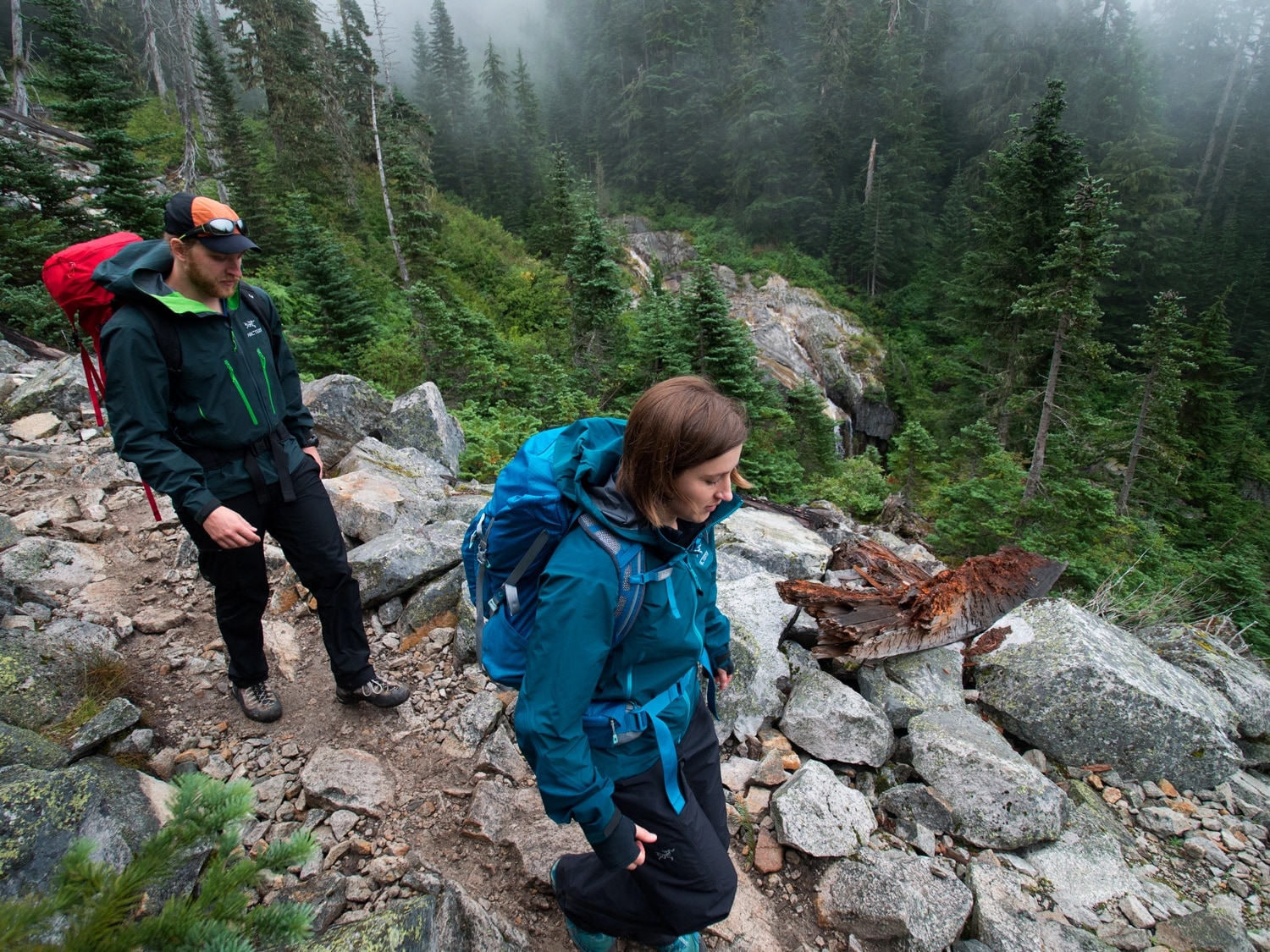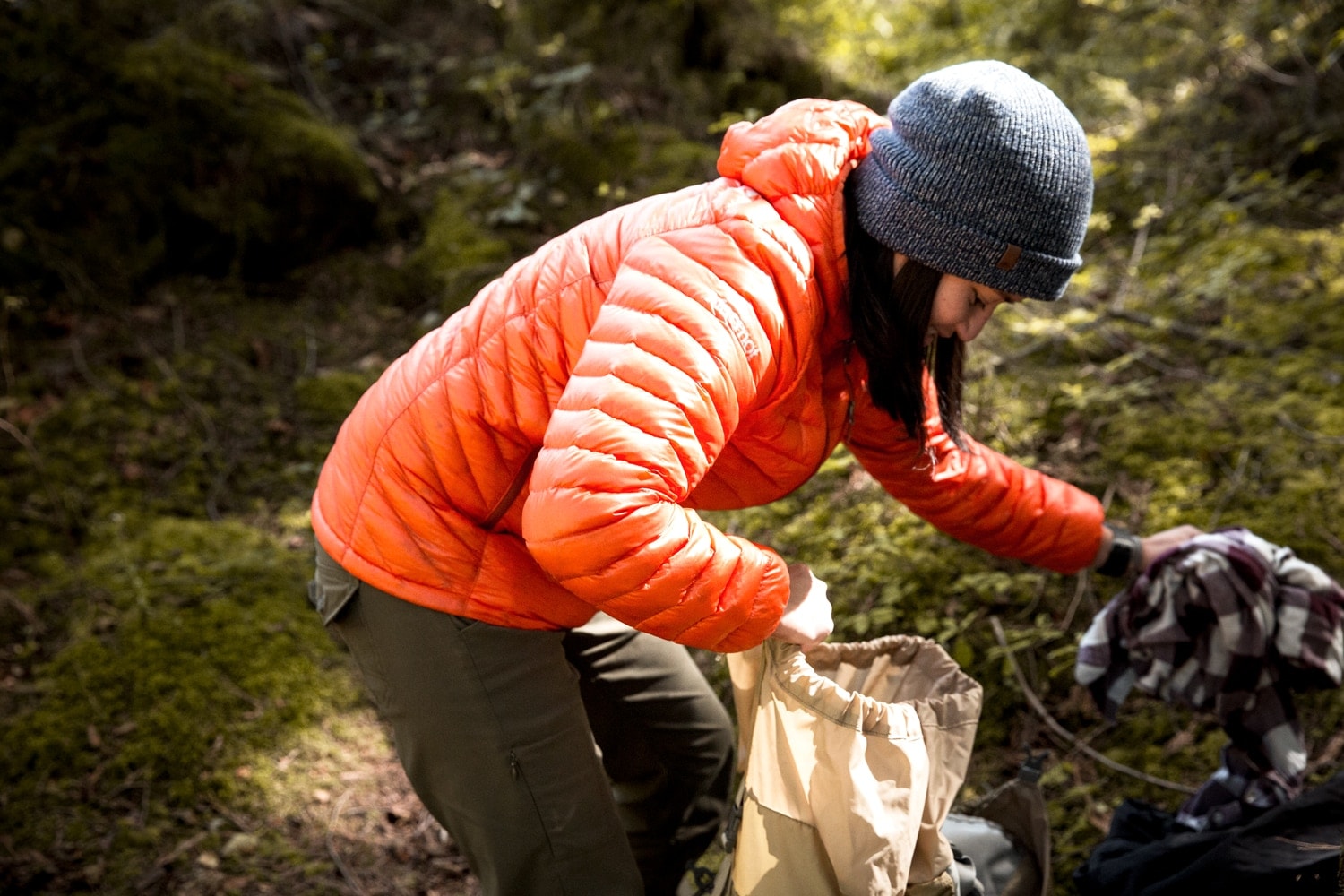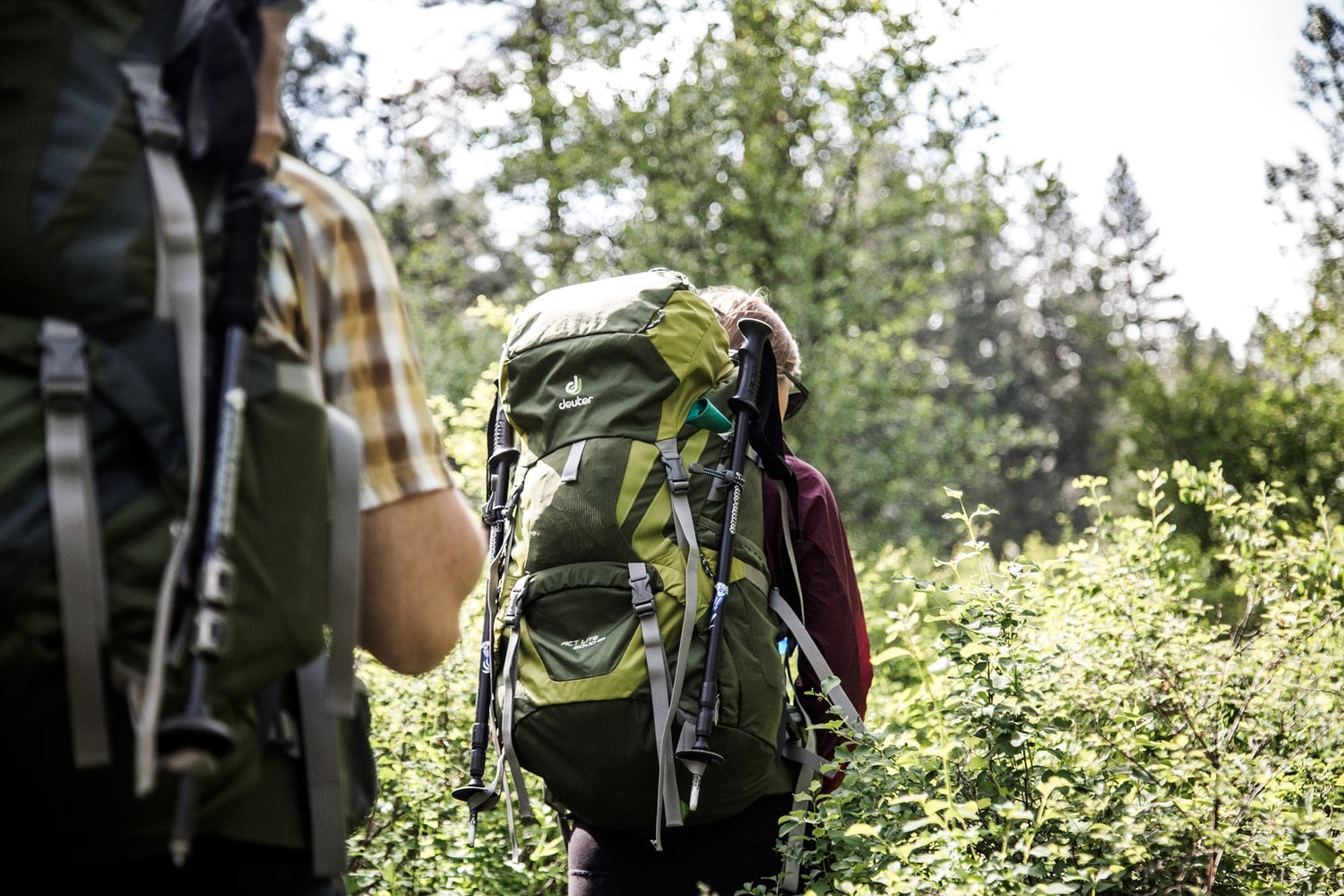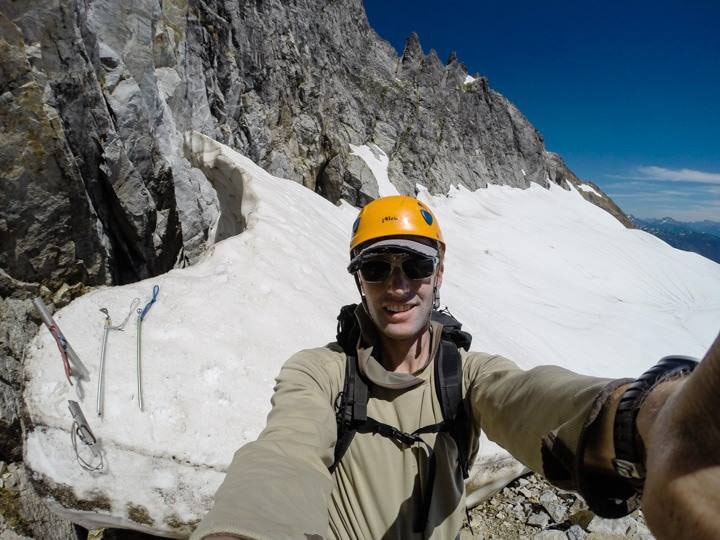We hear this question a lot from new and experienced hikers alike: How much should your backpack weigh?
Lots of factors go into determining pack weight, making it tough to give an exact weight recommendation for every hiker. To get some help, we turned to one of our pack-fit pros, Valerie Loughney, from our REI Silverdale store in Washington.
Pack Weight for Backpacking and Hiking
When determining your pack weight, follow these very general guidelines:
- A loaded backpacking pack should not weigh more than about 20 percent of your body weight. (If you weigh 150 pounds, your pack should not exceed 30 pounds for backpacking.)
- A loaded day hiking pack should not weigh more than about 10 percent of your body weight. (If you weigh 150 pounds, your pack should not exceed 15 pounds for hiking.)
So, for example, a hiker who weighs 150 pounds should strive to carry 30 pounds or less while backpacking and 15 pounds or less while day hiking. Using these body weight percentages as a guide will help you keep your pack at a manageable weight. However, they don't work in every situation. For instance, very petite backpackers will often end up carrying more than 20 percent because you can only get your pack weight so low. In addition to body weight, Loughney says, the following factors play a big part in the overall weight of your pack:
- Trip duration: The longer your trip, the more food, water and fuel you'll need to carry, which, of course, adds weight to your pack. Even on multiday adventures, you'll still want your pack close to 20 percent of your body weight, so you'll need to be extra thoughtful about the gear and clothing you're carrying to compensate for all that extra gear.
- Season/weather: If you're heading out in frigid temps, you'll need to have warmer, heavier clothing and gear than if you're trekking in sunny summer weather.
- Personal preference: Some people value comfort at camp and are willing to accept the inherent weight that comes with hauling in luxuries like a hammock, extra clothes and a thick, cushy sleeping pad. Others are OK with wearing the same clothes for days on end and sleeping on a lightweight pad.
How to Reduce Pack Weight

Most hikers and backpackers see the value in carrying less weight: It can help you travel faster, farther and more comfortably. However, keep in mind that you don't want to compromise your well-being by skimping on certain items, such as a first-aid kit and other Ten Essentials. You can still choose lightweight versions of these, but don't leave them out entirely. Also, don't go so light that you have to rely on your hiking buddies for extra food or a warm layer. No one likes a moocher.
Here are some suggestions for reducing pack weight:
Know your base weight: Base weight is how much your loaded pack weighs, minus "consumables," such as food, water and fuel. You exclude these things because their amounts vary trip to trip and will decrease throughout your journey as you eat, drink and cook. But everything else that goes in your pack, such as your tent, sleeping bag, water filter, stove and clothing, will not change much from trip to trip. Knowing your base weight gives you a consistent number that you can work on reducing.
Some backpackers define themselves based on their pack base weight. For instance, you're generally considered an ultralight backpacker if your base weight is under 10 pounds and a lightweight backpacker if your base weight is under 20 pounds. Most traditional backpackers will have a base weight under 30 pounds.
Weigh your gear: Use a kitchen scale or luggage scale to weigh all your current gear. This includes everything from your underwear to camp stove. You probably have a handful of similar items at home, such as a couple of fleece jackets, and knowing the exact weight of each one can help you decide which to bring. Recording weights in a spreadsheet is helpful for comparing items and planning your next adventure, and you can add up the weights to get your base weight.
Replace old gear with lighter gear: Every year lighter gear hits the market. So, if you can afford to do so, replacing your older, heavier gear with new, lighter pieces will quickly drop your pack weight. Focus first on the big four: your pack, sleeping bag, sleeping pad and tent. Strive to get a pack and tent that each weigh about three pounds or less and you'll be off to a great start. Do the same for the combined weight of your sleeping bag and pad. Even lighter options exist if you're really counting ounces.
Eliminate unnecessary items: When you get back from a trip, take everything out of your pack and lay it on the floor. Then sort your things into three piles: Items you used a lot, items you used occasionally and items you never used. Take a close look at the things in the occasional and never piles and decide if you really need them next time. Loughney cautions that many hikers take too much clothing and food, so, ask yourself things like, Do those pajama pants or extra pair of underwear really need to go along? And if I didn't eat any of those blueberry-flavored energy bars on this trip, should I bring them next time?
It can be helpful to snap a picture of your piles so you can remember what you did and didn't use when packing for your next trip. And remember, there are some items, such as a first-aid kit, that may not get much use but always need to go with you.
Meal plan: Quickly grabbing a bunch of food on your way out the door is a sure way to end up with an overloaded pack. Take a few moments to plan out your menu ahead of time by writing down what you will eat for each meal. Although it's wise to carry a little extra food, a bit of planning will prevent an irrational amount of beef jerky or chocolate from ending up in your pack. A reasonable goal is 1.5 to 2.5 pounds of food (or 2,500 to 4,500 calories) per person per day depending on your size, weight and exertion level. Learn more in our article about meal planning for backpacking trips.
Repackage: Do you really need a giant tube of toothpaste for a weekend trip? What about the cardboard box for your mac and cheese? Repackaging or removing items is an easy way to save weight. You can use small reusable travel bottles for things like toothpaste and sunscreen. For food, put your goodies in simple, lightweight plastic bags rather than taking along the original packaging (don't repackage freeze-dried meals; those are meant to be carried as is).
Also, think about how you pack your gear and clothing. Individual stuff sacks are great for organization, but they add ounces. Many lightweight backpackers will ditch the stuff sack for their tent and pack the tent directly into their backpack. Same goes for the stuff sacks that hold the tent poles and stakes.
Use a gear list: Using a list when you're packing will help keep you from tossing in unnecessary items. Use our backpacking checklist or ultralight backpacking checklist to get started and adapt them as you need to. To really save weight, avoid taking along items that have only a single use, such as a pillow (you can use a rolled-up jacket instead).
Share the weight: Spread the load out among your hiking partners. Just because you own the tent, stove and water filter doesn't mean you must carry them all. Distribute these shared items among your hiking group to help even out the weight.
Packing Your Gear

No matter how light your gear is, haphazardly cramming items in your pack can result in an uncomfortable, unstable load. There's a method to the madness that will help the pack feel balanced and secure.
First and foremost, Loughney recommends using a pack that's large enough to fit all your gear and clothing inside rather than using a small pack that requires strapping a bunch of things to the outside. Having items outside the pack can cause the load to feel unstable. For specific tips on exactly how to load your pack, learn more in our article: How to Pack and Hoist a Backpack.

